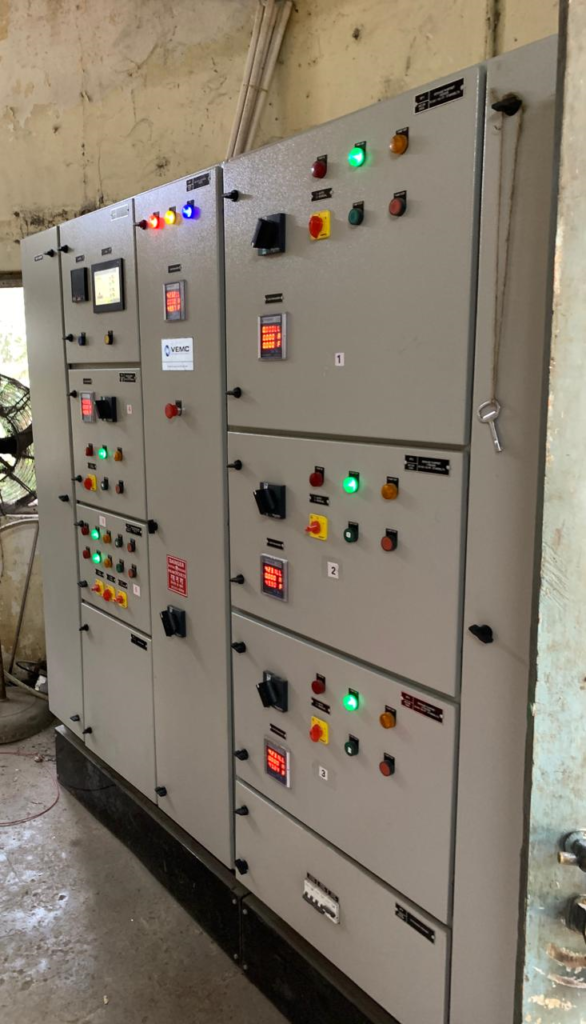Located between the Powai and Vihar lakes of East Mumbai, IIT Bombay has a sprawling campus of about 550 acres. The green cover of the campus has been maintained over the years and gives the campus an idyllic appearance. The institution authorities have, in fact, been very keen on embodying and exemplifying a sustainable spirit towards education and research. Sewage disposal of this massive campus, with nearly 600 major buildings, had to be in line with the same spirit.

Challenge
The organisation was looking at a sewage disposal solution which combined the benefits of automatic operation as well as energy efficiency. The most important consideration was to reduce human intervention. The control panel had to be designed so as to avoid energy wastage and ensure the highest efficiency. Finally, an emergency alarm mechanism had to be installed for sudden spurts in sewage.
Our Solution
After a thorough feasibility study of the existing disposal system at the campus, we designed a motor control center (MCC) panel, considering the requirements of control, safety and efficiency. Detailed Single Line Diagrams and General Arrangement Drawings were discussed with the client. Components of the highest quality were used and a state-of-the-art graphical display was installed for tracking parameters such as voltage, current and frequency.
Working of the MCC panel
The working logic formed the core of our sewage disposal solution. The sewage tank was calibrated with markers of 20%, 40%, 60%, and 80%, and all pumps were to be OFF with sewage levels below the 20% (Low) mark. As soon as the sewage fluid would rise above the 40% (High) mark, Pump #1 would start and stop only when the fluid levels dropped below the 20% mark. In case the fluid levels rose above the 60% mark (Very High), Pump #2 would start and run alongside Pump #1. If the fluid levels crossed the 80% (Very Very High) mark, Pump #3 would start and run alongside pumps #1 and #2. An alarm would also go off as soon as the fluid level crossed the 80% mark. As the level of sewage fluid dropped through the markers, the pumps would stop running, one at a time, in the first in first out (FIFO) mode. Finally, with the sewage fluid dropping below the 20% (Low) mark, all pumps would stop and the cycle of running the pumps would change to ensure equal usage of all pump sets.
The Impact
This working logic ensured the proportionate usage of pumps in response to the volume of sewage in the tank and also used all the pump sets equally, to avoid wear and tear of only one or a few pumps.
For any assistance that you might need, feel free to contact us on +91 98199 07445. With 72 years of market experience, VEMC provides end-to-end EPC services to its clients. VEMC is ISO 9001:2015 certified and CRISIL MSE-1 rated, and a pioneer in the field of electromechanical engineering products, allied equipment, and services.

